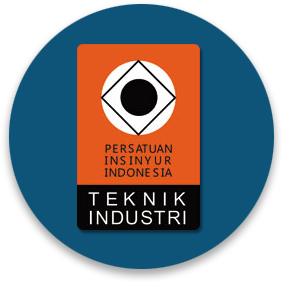Penyelesaian Mechanical Fault di Mesin Ring Spinning dengan Pendekatan Pareto Diagram dan Fishbone
Abstract
Proses Pemintalan benang menurut pembuatannya bisa dibagi menjadi tiga, diantaranya adalah pemintalan Airjet, pemintalan Open-End, dan pemintalan Ring Spinning (Goyal & Nayak, 2019). Didalam industri pemintalan pengendalian kualitas dan standar produksi adalah salah satu hal yang tidak bisa terpisahkan dan sangat penting untuk menghasilkan benang yang memiliki mutu tinggi sesuai dengan keinginan konsumen (Dharma, Ikatrinasari, et al., 2019). Untuk mengetahui kualitas ketidakrataan benang TR Ne 30 KT 65/35 dapat dilihat dengan menggunakan alat uji bernama uster evenness tester. Hasil Uster Evenness Tester (J. Li et al., n.d.; Liu et al., 2012) antara hasil benang yang bottom apronnya normal, bottom apron yang sobek, serta bottom apron yang bolong menunjukkan perbedaan IPI antara ketiganya. Perbandingan kualitas standar benang antara bottom apron yang normal dan bottom apron yang sobek maupun bolong kemudian dapat disimpulkan bahwa dengan bottom apron normal, kualitas unevenness (9,44%) lebih bagus dibandingkan dengan standar kualitas U% (9,5%), sedangkan untuk hasil pengujian unevenness dengan bottom apron bolong dan sobek secara berturut-turut adalah 9,68% dan 9,64%, dengan hasil tersebut, bahwa bottom apron sobek dan bottom apron bolong tidak boleh dipakai dan harus segera diganti karena akan menjadikan U% tidak standar. Ketidakrataan benang yang memiliki faktor dominan ada pada bottom apron cacat yang dapat sangat berpengaruh pada kualitas IPI yang tidak sesuai dengan standar yang sudah ditentukan. Sehingga pada bottom apron tersebut perlu diperhatikan dan diberikan perawatan sesuai dengan jadwal yang sudah ada atau dilakukan penggantian jika sebelum jadwal scouring terjadi bottom apron tersebut sudah rusak dan diganti dengan yang sudah dicuci. Penyebab dari bottom apron yang rusak adalah karena seringnya Lapping dan karena usia apron sudah mencapai batas maksimalnya. Penyelesaian untuk permasalahan ketidakrataan benang yang disebabkan oleh bottom apron yang rusak adalah dengan cara mengganti yang baru.
Full Text:
PDFReferences
Dharma, F. P., Hardiman, H. D., Ikatrinasari, Z. F., & Purba, H. H. (2019). New development fiber material : use DoE approach to determine the best formula for blended fiber silk (Samiya Cynthia Riccini and Semi-Natural Fiber). IOP Conference Series: Materials Science and Engineering, 508(1). https://doi.org/10.1088/1757-899X/508/1/012105
Dharma, F. P., Ikatrinasari, Z. F., Purba, H. H., & Ayu, W. (2019). Reducing non conformance quality of yarn using pareto principles and fishbone diagram in textile industry. IOP Conference Series: Materials Science and Engineering, 508(1). https://doi.org/10.1088/1757-899X/508/1/012092
Faulkner, W. B., Hequet, E. F., Wanjura, J., & Boman, R. (2012). Relationships of cotton fiber properties to ring-spun yarn quality on selected High Plains cottons. Textile Research Journal, 82(4), 400–414. https://doi.org/10.1177/0040517511426613
Faulkner, W. B., Hequet, E. F., Wanjura, J., & Boman, R. (2012). Relationships of cotton fiber properties to ring-spun yarn quality on selected High Plains cottons. Textile Research Journal, 82(4), 400–414. https://doi.org/10.1177/0040517511426613
Goyal, A., & Nayak, R. (2019). Sustainability in yarn manufacturing. In Sustainable Technologies for Fashion and Textiles (pp. 33–55). Elsevier. https://doi.org/10.1016/B978-0-08-102867-4.00002-5
Gulsevincler, E., Usal, M. R., & Yilmaz, D. (2020). The effect of humidified air on yarn properties in a jet-ring spinning system. Tekstilec, 63(4), 294–304. https://doi.org/10.14502/Tekstilec2020.64.294-304
Günaydin, G. K., Soydan, A. S., & Palamutçu, S. (2018). Evaluation of cotton fibre properties in compact yarn spinning processes and investigation of fibre and yarn properties. Fibres and Textiles in Eastern Europe, 26(3), 23–34. https://doi.org/10.5604/01.3001.0011.7299
Gupta, N. (n.d.). An Application of DMAIC Methodology for Increasing the Yarn Quality in Textile Industry. In IOSR Journal of Mechanical and Civil Engineering (Vol. 6, Issue 1). www.iosrjournals.org
Harpa, R. (n.d.). OPTIMIZATION OF THE DRAFTING SYSTEM FOR THE RING SPINNING. PART II.
Kelly, C. M., Hequet, E. F., & Dever, J. K. (2013). Breeding for improved yarn quality: Modifying fiber length distribution. Industrial Crops and Products, 42(1), 386–396. https://doi.org/10.1016/j.indcrop.2012.06.018
Kinkeldei, T., Zysset, C., Cherenack, K. H., & Troster, G. (2011). A textile integrated sensor system for monitoring humidity and temperature. 2011 16th International Solid-State Sensors, Actuators and Microsystems Conference, TRANSDUCERS’11, 1156–1159. https://doi.org/10.1109/TRANSDUCERS.2011.5969238
Kotb, N. A. (2012). Predicting Yarn Quality Performance Based on Fibers types and Yarn Structure. In Life Science Journal (Vol. 9, Issue 3). http://www.lifesciencesite.comhttp://www.lifesciencesite.com.142
Li, Z., Pan, R., Zhang, J., Li, B., Gao, W., & Bao, W. (2015). Measuring the unevenness of yarn apparent diameter from yarn sequence images. Measurement Science and Technology, 27(1). https://doi.org/10.1088/0957-0233/27/1/015404
Li, J., Zuo, B., Wang, C., & Tu, W. (n.d.). A Direct Measurement Method of Yarn Evenness Based on Machine Vision (Vol. 10). http://www.jeffjournal.org
Liu, J., Jiang, H., Pan, R., Gao, W., & Xu, M. (2012). Evaluation of yarn evenness in fabric based on image processing. Textile Research Journal, 82(10), 1026–1037. https://doi.org/10.1177/0040517511431320
Mia, R., Habib-A-Rasul, S. S., Tasin, M. A. S., Mamun, M. A. al, Ahmed, M. F., & Ahmed, T. (2020). Statistical analysis of fiber quality to obtain a correlation between the fiber and yarn quality. Journal of Textile Engineering & Fashion Technology, 6(6). https://doi.org/10.15406/jteft.2020.06.00256
Pujianto, H., Dharma, P., Hindardi, D., & Tuwarno, T. P. (n.d.). Penentuan Setelan Rotor Mesin Open End Untuk Pembuatan Benang Ne 6 sebagai Upaya Jaminan Atas spesifikasi dan Kualitas Pada Workshop Pemintalan di Ak-Tekstil Solo. In JOURNAL OF LABORATORY ISSN (Vol. 4, Issue 2). Online.
Uster Technologies AG. (2011). Uster Tester 5 - The Yarn Inspection System.
Xia, Z., Wang, H., Wang, X., Ye, W., & Xu, W. (2011). A study on the relationship between irregularity and hairiness of spun yarns. Textile Research Journal, 81(3), 273–279. https://doi.org/10.1177/0040517510380112
Xia, Z., & Xu, W. (2013). A Review of Ring Staple Yarn Spinning Method Development and Its Trend Prediction. In Journal of Natural Fibers (Vol. 10, Issue 1, pp. 62–81). https://doi.org/10.1080/15440478.2012.763218
Zhong, P., Kang, Z., Han, S., hu, R., Pang, J., Zhang, X., & Huang, F. (2015). Evaluation method for yarn diameter unevenness based on image sequence processing. Textile Research Journal, 85(4), 369–379. https://doi.org/10.1177/0040517514547211
DOI: http://dx.doi.org/10.22441/MBCIE.2022.013
Refbacks
- There are currently no refbacks.
Copyright (c) 2022 Prosiding Seminar Nasional Mercu Buana Conference on Industrial Engineering
Journal ISSN:
| e-ISSN | |
| 2988-4284 |
Tim Editorial Office
Proceeding Mercu Buana Conference on Industrial Engineering
Program Studi Magister Teknik Industri Universitas Mercu Buana
Jl. Raya Meruya Selatan No. 1 Kembangan Jakarta Barat
Email: [[email protected]]
Website: https://publikasi.mercubuana.ac.id/index.php/mbcie/
The Journal is Indexed and Journal List Title by:
in Collaboration with:








